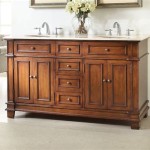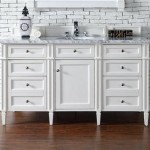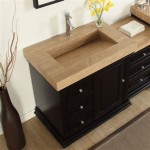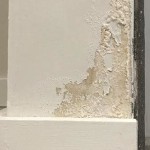How To Fix A Dripping Bathroom Sink Mixer Tap Cartridge
A dripping bathroom sink mixer tap is a common household annoyance that can lead to wasted water, increased water bills, and potential damage to the sink and surrounding areas. The most frequent culprit behind this persistent dripping is a faulty cartridge within the tap assembly. This article provides a comprehensive guide on how to diagnose the issue and replace the cartridge, effectively stopping the drip and restoring the tap to proper working order. The process involves several steps, requiring patience and attention to detail to ensure a successful repair.
Before commencing any plumbing work, it is crucial to understand the potential risks involved. Water and electricity are a dangerous combination, so ensuring the water supply is completely shut off is paramount. Furthermore, handling plumbing fixtures often involves working with metal parts that may have sharp edges or be corroded. Protective gloves are highly recommended to prevent cuts and contamination. Finally, understanding the specific type of mixer tap and cartridge is essential for a successful replacement. There are various designs and sizes, and using the wrong cartridge can lead to further problems.
Key Point 1: Preparation and Safety Measures
The initial phase of fixing a dripping mixer tap focuses on preparation and ensuring a safe working environment. Gathering the necessary tools and materials is critical to avoid interruptions during the repair process. This includes a flathead screwdriver, a Phillips head screwdriver, an adjustable wrench, a cartridge puller (optional but recommended), new cartridge, penetrating oil (optional), a clean cloth or towel, and safety gloves.
The first and most important safety measure is to shut off the water supply to the tap. Locate the shut-off valves under the sink, typically one for hot water and one for cold water. Turn both valves clockwise until they are completely closed. If the shut-off valves are not easily accessible or are not functioning correctly, the main water supply to the house will need to be shut off. Once the water is shut off, turn on the tap to relieve any remaining pressure in the pipes.
After shutting off the water, protect the sink basin from scratches or damage by placing a clean cloth or towel inside the sink. This will prevent marks from tools or dropped parts. Reviewing the manufacturer's instructions for the specific mixer tap model is also highly recommended. This will provide specific guidance on disassembly and cartridge replacement.
Key Point 2: Disassembling the Mixer Tap and Removing the Old Cartridge
With the preparations complete, the next step involves disassembling the mixer tap to access and remove the faulty cartridge. The disassembly process varies slightly depending on the tap design, but the general principles remain the same. The first step is typically to remove the decorative cap or handle that covers the screw securing the handle to the tap body.
Using a small flathead screwdriver, carefully pry off the decorative cap on the handle. Underneath the cap, there will usually be a screw, either a Phillips head or a flathead screw. Use the appropriate screwdriver to loosen and remove the screw. Once the screw is removed, the handle should be able to be pulled off the tap body. Be cautious not to force the handle, as this can damage the tap.
With the handle removed, the cartridge retaining nut or sleeve will be exposed. This nut secures the cartridge in place and prevents it from moving. Use an adjustable wrench to loosen the retaining nut. Be sure to use the correct size wrench to avoid damaging the nut. Apply penetrating oil if the nut is corroded or difficult to loosen. Once the nut is loosened, carefully unscrew it completely and set it aside.
With the retaining nut removed, the cartridge can now be extracted from the tap body. The cartridge may be difficult to remove if it is corroded or has been in place for a long time. A cartridge puller tool can be helpful in this situation. If a cartridge puller is not available, attempt to gently wiggle the cartridge back and forth while pulling upwards. Avoid using excessive force, as this can damage the tap body or break the cartridge inside.
Once the old cartridge is removed, carefully inspect the tap body for any signs of corrosion or damage. Clean the inside of the tap body with a clean cloth to remove any debris or sediment. This will ensure a proper seal with the new cartridge.
Key Point 3: Installing the New Cartridge and Reassembling the Mixer Tap
After removing the old cartridge and cleaning the tap body, the final step is to install the new cartridge and reassemble the mixer tap. Before installing the new cartridge, compare it to the old cartridge to ensure it is the correct size and type. Verify that the new cartridge has the same number of ports and that the dimensions are identical. Using an incorrect cartridge will prevent the tap from functioning properly and may even damage it.
Insert the new cartridge into the tap body, ensuring that it is properly aligned. The cartridge will typically have a notch or key that aligns with a corresponding slot in the tap body. Make sure the cartridge is fully seated and that it is flush with the top of the tap body. Once the cartridge is in place, reattach the retaining nut and tighten it securely with an adjustable wrench. Be careful not to overtighten the nut, as this can damage the cartridge or the tap body.
With the retaining nut tightened, reattach the handle to the tap. Align the handle with the stem of the cartridge and push it into place. Secure the handle by reinstalling the screw that was removed earlier. Tighten the screw firmly, but avoid overtightening it. Finally, snap the decorative cap back into place on the handle.
After reassembling the tap, slowly turn the water supply back on by opening the shut-off valves under the sink. Check the tap for any leaks around the handle, the base of the tap, or the connections under the sink. If any leaks are detected, immediately shut off the water supply and tighten the connections or recheck the cartridge installation. Once all leaks are resolved, test the tap by turning it on and off and adjusting the water temperature. Ensure that the water flows smoothly and that the tap shuts off completely without any dripping.
If the tap continues to drip after replacing the cartridge, there may be other underlying issues, such as damage to the valve seat or the tap body itself. In these cases, it may be necessary to consult a professional plumber to diagnose and repair the problem. Regular maintenance, such as cleaning the aerator and checking for leaks, can help prevent future problems with the mixer tap. Replacing worn or damaged parts promptly can also extend the life of the tap and prevent costly repairs.

Replacing A Cartridge In Mixer Tap The

Fixing A Stiff Or Leaking Mixer Tap Cartridge Removal And Disassembly

Tap Cartridge Replacement Guide Step By

Single Lever Mono Basin Flow Cartridge Maintenance And Replacement

How To Fix A Dripping Tap Axa

How To Replace Your Tap Valve In Kitchen Or Bathroom

Is Your Ceramic Disc Faucet Leaking Here S How To Clean Fix It

How To Fix A Leaky Faucet Guides For Every Design And Style

How To Fix A Dripping Moen Faucet Howtolou Com

How To Fix A Bathroom Faucet 14 Steps
Related Posts







